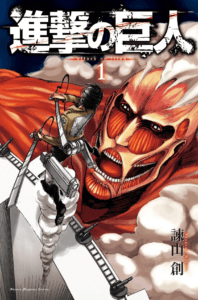 [Spoiler Alert – it’s pretty much everything.]
[Spoiler Alert – it’s pretty much everything.]
After 12 years of serialized manga, Hajime Isayama’s Attack on Titan is done. It didn’t take long for the online critics to start dissecting the controversial conclusion: Is it unsatisfying? Is it maybe a little cringeworthy?
I’d argue it’s both. But more than that, now that we can analyze the work as a whole, I’d say Attack on Titan was probably never very good to begin with. The signs were there almost from the very beginning.
It’s hard to overstate how massive a phenomenon Attack on Titan was in its early years. In Tokyo, you could hardly buy snacks at a convenience store without seeing the image of the Colossus Titan peering over Wall Maria. In hindsight, though, maybe a few such iconic images were all the manga really had going for it.
It started out solid enough, like any typical shonen manga. We had a teenager facing some kind of calamity, who then undergoes some kind of training so that he can develop his skills, learn the secrets of his world, and eventually save it.
The first few plot arcs did a good job of setting this up. The mystery of the origin of the Titans, what Eren Yeager’s father might have to do with it, and what the plans of the enemy forces might actually be, was a good starting point. Then, the sudden appearance of the Female Titan and the ultimate revelation of her identity made for a satisfying conclusion to the first act (not to mention a fine first season of the eventual anime).
New readers should be advised not to get too invested in this leg of the story, however, because Isayama starts losing momentum soon after. And by the time of the much discussed and criticized conclusion, it becomes clear that the story of Attack on Titan is little more than a disjointed, muddled mess.
Skill counts for something
Before I go into my thoughts about that story and how it eventually panned out, though, I’d like to talk about something that has not been much discussed. Attack on Titan, the manga, is hard to read – particularly for Westerners reading it in translation – mainly because it’s just so poorly produced.
Isayama has admitted before that he doesn’t think he draws very well. That’s not just typical Japanese modesty. He can’t and he knows it. His artwork has improved over time, no doubt with the aid of assistants, but not by much. This harms the manga in multiple ways.
First, there are the characters. There are far too many of them, but there’s a more important matter. Isayama’s poor draftsmanship often makes it hard to tell who we’re looking at. Is it a dark-haired man or a dark-haired woman with her hair pulled back into a ponytail? Is it Eren or Levi? We’re given few cues.
It doesn’t help that the characters all have mixed-up pastiches of Western names that might as well be the names of space aliens. It further doesn’t help that they have no distinctive dialogue patterns or accents, or that they seldom identify themselves by name, let alone the people to whom they are speaking. These factors, combined with Isayama’s basic inability to draw characters with consistently recognizable appearances, make the story that much harder to follow.
